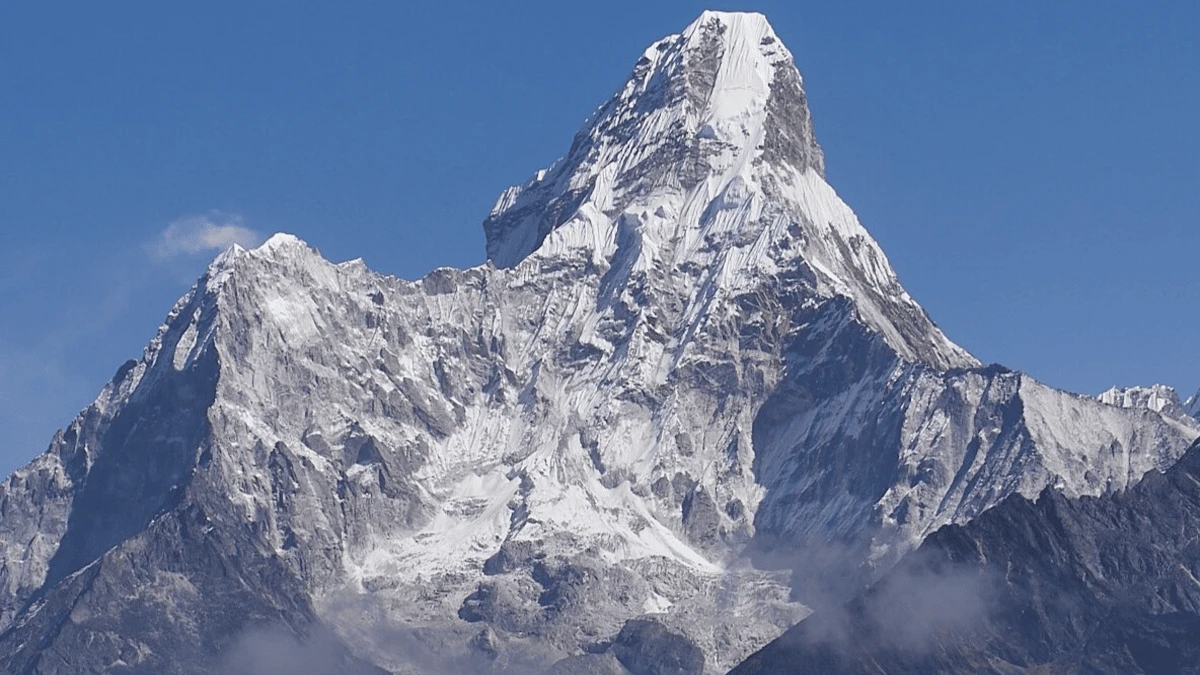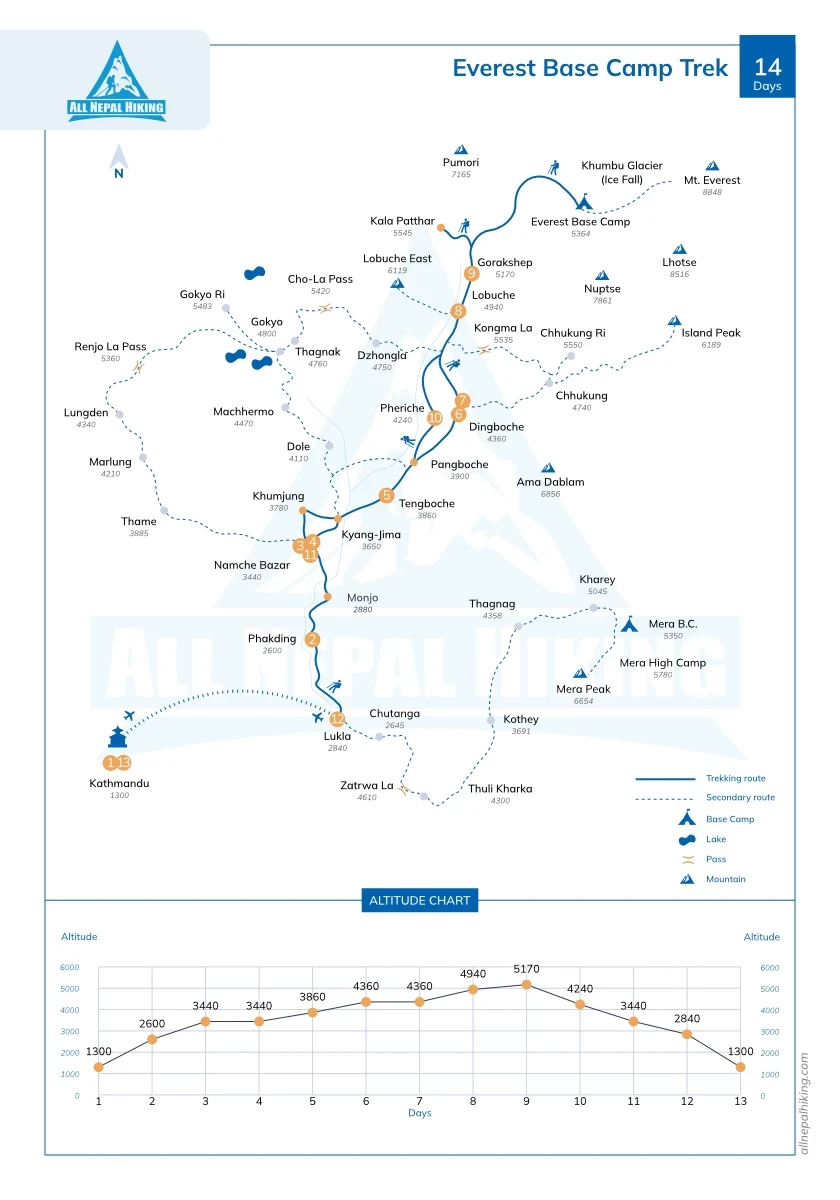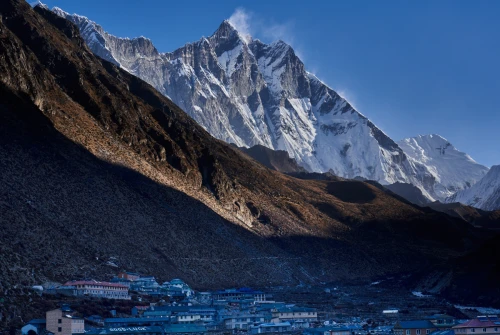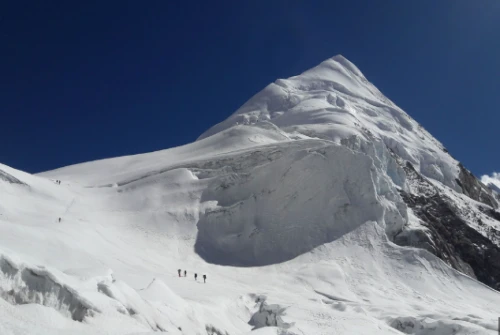The Everest Base Camp hike is recognized globally as one of the most iconic and thrilling high-altitude adventures. Every year, thousands of trekkers and hikers from around the world embark on this legendary Everest Base Camp trek in Nepal, exploring the heart of the stunning Nepalese Himalayas.
This epic 14-day Everest Base Camp Hike offers a rare chance to witness some of the planet’s tallest and most magnificent peaks, including the world-famous Mount Everest Base Camp (8,848 meters), along with Lhotse, Ama Dablam, and other breathtaking Himalayan giants that shape the extraordinary mountain skyline.
Whether you call it the Everest Base Camp hike, Everest Base Camp trekking, or a hike to the base camp of Mount Everest, this expedition perfectly blends awe-inspiring natural beauty, rich cultural experiences, and a physically demanding but deeply rewarding journey. The route takes you deep into Sagarmatha National Park, a UNESCO World Heritage Site, renowned for its biodiversity, towering glaciers, alpine forests, and dramatic mountain landscapes.
Along the way, trekkers experience authentic interactions with the resilient and welcoming Sherpa communities, whose unique culture and centuries-old mountaineering traditions enrich the journey. From Namche Bazaar, the Sherpa capital, to sacred sites like Tengboche Monastery, the Everest Base Camp trail takes you through some of the most picturesque locations in the region.
The entire Everest Base Camp trekking adventure typically lasts 14 days, providing ample time for gradual acclimatization at key points to reduce the risk of altitude sickness. This duration allows hikers to safely ascend from Lukla’s 2,800 meters to the heights of Kala Patthar (5,545 meters), a famous viewpoint offering spectacular panoramic vistas of Everest Base Camp heights and surrounding peaks.
Rated as moderate to challenging, the trekking Everest Base Camp experience requires a good level of fitness, endurance, and mental strength. Participants should be prepared for long days of trekking often between 5 to 8 hours across diverse terrain including rocky paths, steep climbs, suspension bridges, and narrow mountain trails. The dramatic Everest Base Camp trek distance combined with the rugged conditions makes the EBC hike both a physical challenge and a rewarding achievement.
Highlights of the journey include crossing the iconic suspension bridges over the roaring Dudh Koshi River, walking through traditional Sherpa villages, and witnessing stunning natural wonders like the Khumbu Glacier. Trekkers also benefit from access to Everest Base Camp trekking maps and trail guides, helping them navigate the Everest Base Camp hike route safely and confidently.
Whether you're considering a luxury Everest Base Camp trek, a standard Everest Base Camp trek package, or simply wondering about the Everest Base Camp hike cost, this journey offers something for every type of traveler from the adventurous backpacker to those seeking a more comfortable, guided experience.
Ultimately, the hike to Everest Base Camp, whether from a Nepal Everest Base Camp hike route or a guided Everest Base Camp trek package, is more than just a journey to the base of the world’s highest mountain, it is a life-changing experience. It offers adventure seekers, nature lovers, and cultural enthusiasts the chance to connect deeply with the Himalayas, test their limits, and create unforgettable memories.
What Makes the Everest Base Camp Hike Special?
The Everest Base Camp hike is more than just a high-altitude journey; it's a once-in-a-lifetime experience that combines breathtaking Himalayan landscapes, deep cultural immersion, and a personal sense of achievement. This iconic adventure leads you through the heart of Nepal’s Khumbu region, where you'll witness the majestic beauty of towering peaks such as Mount Everest (8,848m), Lhotse, Ama Dablam, Nuptse, and more making it one of the most scenic hikes on the planet.
What makes the Everest Base Camp trek truly special is its deep connection to mountaineering history, as you follow in the footsteps of legendary climbers like Sir Edmund Hillary and Tenzing Norgay, passing through the same trails that once led them to the summit of the world. As you progress along the trail, you’ll journey through Sagarmatha National Park, a UNESCO World Heritage Site teeming with diverse flora and fauna, dramatic glaciers, suspension bridges, and pristine alpine valleys that feel untouched by time.
Another highlight of the Everest Base Camp trekking experience is the rich cultural interaction with the Sherpa people, known for their mountain wisdom, warm hospitality, and deep-rooted Buddhist traditions. Villages like Namche Bazaar, Tengboche, and Dingboche allow trekkers to witness traditional Himalayan life, visit ancient monasteries, and enjoy cozy teahouse stays that offer both comfort and a connection to local customs.
Physically, the Everest Base Camp hike presents a moderate to challenging adventure, requiring endurance, determination, and a steady pace, especially as you ascend from Lukla (2,860m) to Kala Patthar (5,545m). The high altitude, long walking days (4–8 hours), and ever-changing terrain make the hike demanding yet achievable for fit and prepared individuals, with proper acclimatization days built into the itinerary to ensure safety and success.
The journey is also filled with unforgettable moments from the thrilling flight to Lukla, considered one of the world’s most exciting airstrips, to the awe-inspiring sunrise views from Kala Patthar, where Everest glows golden against the early morning sky. Every twist of the trail reveals photo-worthy scenes, and every stop offers the chance to connect with fellow hikers from around the world, sharing stories and motivation around teahouse fires.
Above all, the Everest Base Camp trek is special because it’s not just a physical journey it’s a spiritual and emotional experience. It’s about finding strength in silence, peace in vast landscapes, and joy in simple mountain life. For many, it becomes a journey of personal growth, inner discovery, and a lasting bond with the Himalayas.
Why Choose All Nepal Hiking for Your Everest Base Camp Hike?
Choosing All Nepal Hiking for your Everest Base Camp trek means trusting a local expert with deep roots in the Himalayan region and a proven track record of delivering safe, personalized, and unforgettable trekking experiences. As a Nepal-based adventure company, we specialize in organizing authentic and well-managed Everest Base Camp hiking journeys that go beyond the typical tour, offering real connections with Sherpa culture, stunning scenic routes, and handpicked teahouses for comfort and warmth.
Our professional team consists of licensed, experienced local guides who understand the terrain, weather patterns, and altitude challenges of the Everest Base Camp trekking region. Their expert knowledge not only ensures your safety throughout the hike but also enriches your journey with cultural stories, hidden trails, and meaningful interactions with local communities.
We offer fully customizable itineraries tailored to your interests, schedule, and fitness level whether you're a first-time hiker or an experienced high-altitude trekker. All Nepal Hiking takes care of every detail, from airport pickup and permits to domestic flights and meals, so you can focus entirely on the experience.
Safety is our top priority, which is why we include acclimatization days, monitor your altitude response carefully, and are prepared with emergency protocols including helicopter evacuation support when needed. We also prioritize eco-friendly trekking practices, ensuring that our trips respect the fragile Himalayan ecosystem and support local livelihoods.
By hiking with All Nepal Hiking, you're not just booking a trip, you're supporting responsible tourism in Nepal, getting real value for your investment, and joining a community of passionate explorers who believe in authentic, sustainable travel.
Why Choose the Everest Base Camp Hike?
The Everest Base Camp hike is much more than just a physical challenge; it is a truly life-changing journey that combines thrilling adventure, deep cultural immersion, and awe-inspiring natural beauty. Whether you call it the Everest Base Camp trek or Everest Base Camp trekking, this experience is ideal for enthusiastic hikers and adventure travelers looking for:
An authentic Himalayan adventure that goes beyond typical mountaineering expeditions, allowing you to explore rugged mountain trails, traditional villages, and pristine alpine environments.
Unique opportunities to engage with the warm and resilient Sherpa community, gaining firsthand insight into their rich culture, customs, and extraordinary mountaineering heritage that has made them legendary guides and climbers.
The chance to traverse some of the most remote and spectacular Himalayan landscapes, from lush forests and serene alpine meadows to stunning glacial valleys and dramatic mountain vistas.
A profound sense of personal achievement by reaching one of the world’s most famous high-altitude destinations, the base camp of Mount Everest, the highest peak on Earth.
Key Highlights of the Everest Base Camp Trekking Experience
Breathtaking panoramic views of iconic Himalayan giants such as Mount Everest, Lhotse, Ama Dablam, Nuptse, and many other towering peaks that dominate the skyline.
Trekking through the legendary Sagarmatha National Park, a UNESCO World Heritage Site renowned for its diverse wildlife, unique flora, and magnificent natural landscapes.
Deep cultural immersion in Sherpa villages like Namche Bazaar the bustling Sherpa capital and Tengboche Monastery, where you can witness traditional ceremonies and experience Sherpa hospitality firsthand.
An unforgettable sunrise hike to Kala Patthar, standing at 5,545 meters, offering arguably the best panoramic views of Everest and its neighboring peaks, a highlight of the entire Everest Base Camp hike.
Staying overnight in cozy teahouses along the route, where you can enjoy hearty local meals, warm hospitality, and a chance to rest and acclimatize amidst the Himalayan wilderness.
A thrilling scenic flight from Kathmandu to Lukla, widely regarded as one of the most exciting and scenic airport approaches in the world, setting the tone for your incredible trekking adventure.
This blend of adventure, culture, and natural splendor makes the Everest Base Camp trek a bucket-list experience for trekkers worldwide, whether you’re hiking, trekking, or simply exploring the majestic Himalayas for the first time.
Best Time to Hike the Everest Base Camp
The best time to hike to Everest Base Camp is during the spring (March to May) and autumn (September to November) seasons, both of which offer the most favorable weather, clear mountain views, and stable trail conditions making them the peak times for Everest Base Camp hiking and trekking.
In spring, the Everest region bursts into color with blooming rhododendrons, mild daytime temperatures, and excellent visibility of snow-capped peaks, making it one of the most picturesque times for both Everest Base Camp treks and photographic hiking adventures. The trails are lively but not overcrowded, offering a perfect balance between solitude and social trekking experience.
The autumn season, following the monsoon, features crisp, clear skies, clean mountain air, and sweeping views of Mount Everest, Lhotse, Ama Dablam, and the surrounding Himalayan giants. The weather is cool, dry, and generally very stable, ideal for safe and enjoyable Everest Base Camp trekking without the risks of slippery trails or flight delays.
Monsoon season (June to August) is not recommended for the Everest Base Camp hike, as the region experiences heavy rainfall, reduced visibility, leech-infested trails, and frequent landslides, making hiking both uncomfortable and potentially dangerous. Flights to Lukla are also more likely to be canceled due to unpredictable weather patterns.
Meanwhile, the winter months (December to February) bring extreme cold, snow-covered trails, and freezing nights, which can be particularly tough for less experienced hikers. While it is possible to complete the EBC trek in winter, it is best suited for those with high-altitude trekking experience and proper winter gear.
Choosing the right season significantly enhances your overall experience, ensuring breathtaking views, safer trails, and better interactions with nature and local culture throughout your Everest Base Camp trekking journey.
Permits and Fees for the Everest Base Camp Hike
To embark on the Everest Base Camp hike, all hikers are required to obtain several official permits and pay associated fees, which are crucial for supporting local infrastructure, conservation efforts, and sustainable tourism in the Everest region.
1. Sagarmatha National Park Entry Permit
The Sagarmatha National Park Entry Permit grants access to this UNESCO World Heritage Site and helps protect the biodiversity and fragile ecosystems found along the Everest Base Camp trekking route. The fee for this permit is typically around NPR 3,000 (approximately USD 25) for foreigners. This permit is mandatory for all trekkers entering the park and is checked at various checkpoints along the trail.
2. TIMS (Trekkers’ Information Management System) Card
The TIMS Card is a required document for all trekkers, used by Nepal’s tourism authorities to track hikers for safety purposes and to ensure responsible tourism practices. The fee for a TIMS Card is typically around NPR 1,000 (approximately USD 8) for individual trekkers. For groups, the fee is lower, but the card is still mandatory for all hikers. In some cases, the TIMS Card is replaced by the Khumbu Pasang Lhamu Rural Municipality Permit for trekkers in the Khumbu region, which has a fee of about NPR 2,000 (approximately USD 17).
3. Local Community Development and Maintenance Fees
In addition to the national permits, local community development and maintenance fees apply, which directly support the Sherpa communities, teahouse facilities, and trail maintenance. These fees ensure that the trekking routes are well-maintained, safe, and culturally immersive. The fee for these services is typically around NPR 2,000 (approximately USD 17), but it may vary depending on the trekking season or location.
Total Fees for the Everest Base Camp Trek
The total cost of permits and fees for the Everest Base Camp trek generally ranges from NPR 6,000 to NPR 7,500 (around USD 50 to USD 65), depending on the specific permits required and the number of trekkers in your group. These fees help ensure the preservation of the region’s natural beauty and provide essential services for trekkers.
All of these required permits and fees are typically included in a guided trekking package, so you won’t need to worry about obtaining them yourself. At All Nepal Hiking, we take care of the complete permit process as part of our full-service approach to your Everest Base Camp hike, ensuring your journey is legal, seamless, and worry-free.



 based on 9 reviews
based on 9 reviews
